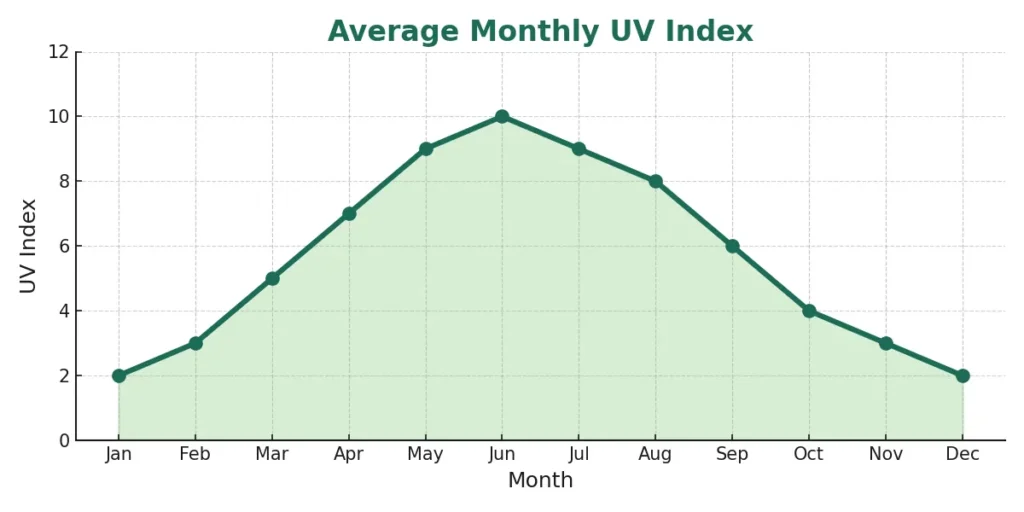Vitamin D is often called the “sunshine vitamin” — and for a good reason. Your body produces it when your skin is exposed to sunlight, and it plays a vital role in supporting your immune system, bones, and overall well-being. But here’s the catch: your vitamin D levels can rise or fall depending on the season.
Let’s break down why this happens and how you can make sure you’re getting enough all year round.
Why Seasons Matter for Vitamin D
The sun’s UVB rays are the main trigger for vitamin D production in your skin. But during the colder months or if you live farther from the equator, the UVB intensity drops — sometimes so much that your body can’t make enough vitamin D, even if you spend time outside.
In summer, it’s much easier: the sun is stronger, and just a short time outdoors can meet your daily needs. However, in winter, you may need to rely more on your diet and supplements.
Average Monthly UV Index
Here’s a look at how the UV Index changes throughout the year:
You can see the highest levels in summer (June–August) and the lowest in winter (December–February). This seasonal variation means your vitamin D strategy should change with the weather.

Practical Tips by Season
Winter
- Sun Exposure: Limited; your body produces very little vitamin D.
- Food Sources: Fatty fish (salmon, mackerel), fortified milk, eggs.
- Supplements: Highly recommended, especially if you live in northern latitudes.
Spring
- Sun Exposure: Aim for 15–20 minutes a day when possible.
- Food Sources: Fatty fish, mushrooms, fortified foods.
- Supplements: Optional — but useful if you don’t get enough sun.
Summer
- Sun Exposure: 10–15 minutes a day is usually enough for most people.
- Food Sources: Continue eating a varied diet, including plant-based sources.
- Supplements: Generally not needed unless advised by your doctor.
Autumn
- Sun Exposure: 15–20 minutes a day when the weather allows.
- Food Sources: Fish, dairy, eggs, fortified products.
- Supplements: Optional, depending on sun exposure and location.
Key Takeaway
Vitamin D needs aren’t the same all year. In summer, sunshine may be enough. In winter, you’ll likely need to rely more on diet and supplements. Keep an eye on your health, talk to your doctor if you suspect low vitamin D levels, and adjust your routine seasonally.
References:
- Holick MF. Vitamin D Deficiency. New England Journal of Medicine. 2007;357:266–281.
- National Institutes of Health – Vitamin D Fact Sheet: https://ods.od.nih.gov/factsheets/VitaminD-Consumer

